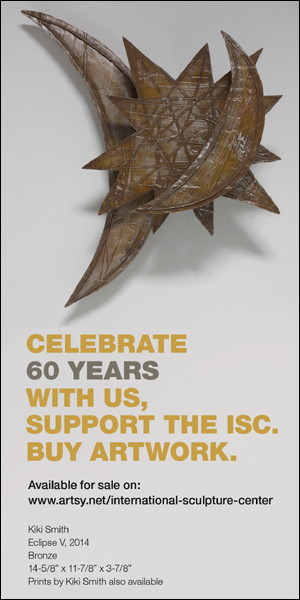Southampton, NY
The Parrish Art Museum
Barbara Kruger’s installation on the facade of The Parrish Art Museum beckoned the viewer to walk along and stand among her signature graphics in one of her most affectionate and sculptural works to date. The site-specific installation was part of the exhibition, “Dreams for the Next Century,” a sort of wish list for
the museum’s permanent collection in which Kruger is represented along with painters Willem DeKooning and David Salle, sculptor Lynda Benglis, and others.
The beautifully scaled and proportioned 19th-century Italianate building and its relationship to the
street form an aesthetically strong and intricate foundation for several large and many small panels of
text revolving around the phrase “You Belong Here.” The museum is located on a busy street populated
with other 19th-century structures that now house various boutiques and stores. Pedestrians walking along the street are able to view and interact with the installation whether or not they enter the museum.
Above the entrance way, large, gray granite-colored panels with red’letters read “You Belong Here,” with the pillars beneath wrapped with words like “Money,” “Taste,” “Desire,” and “History.” Along the wrought iron fences that flank the museum, adjectives meant to evoke both common and differentiating descriptions of art, like “Brilliant,” “Memorable,” or “Ridiculous,” are placed. The backs of the front entrance stairs contain run-on phrases-“if You know what you want… if You’re happy or sad… if you like to speculate about objects and ideas…if you think art can change the world”-essentially the second part of a complete sentence formed with “You Belong Here” as its beginning.
Throughout her career, Kruger has often been labeled a social commentator, political agitator, and feminist. By engaging viewers through the graphic placement of text and manipulation of images into works that aim to prompt emotion in the viewer, she has used her work to support causes she believes in like legalized abortion and the fight against domestic violence. Kruger’s work is concerned with provoking questions about power and its effect on the human condition, and questions of identity and human behavior. This installation clearly deals with ideas of subjectivity and finance, as well as questions of influence and administration. But it also wants to evoke in the viewer a sense of place, addressing how museums can or do serve a given community and the role of visual art within the community at large.
Because the installation is located in such a prominent spot in the heart of the Hamptons (notorious for its summer population of old and new money, and extravagant living), You Belong Here also becomes a tongue incheek commentary on tourism and consumerism. ln addition, Bernd and Hilla Becher’s cool photographic critique of public buildings comes to mind, yet Kruger’s approach is decidedly, and refreshingly, not anonymous.
As a student, Kruger studied under photographer Diane Arbus, and, like Arbus, she is an observer of human experience. However, Kruger was early on prompted to add text and three-dimensional materials to photographic imagery after her first job at Condd Nast Publications. She has been criticized for her Madison Avenue-like approach, though, perhaps because of that, Kruger’s work over the years has been a strong barometer in forecasting the blurring between art, fashion, advertising, and multi-media communication. Like Ashley Bickerton, Kruger pays homage to the aesthetics of commercial design.
Both are concerned with the visual imagery of advertising, with the media, and with a consumer society.
Perhaps a more important element of Kruger’s work to take note of, however, is its progress over the years. lf this current installation is any indication, she is both expanding her use of foundation materials and location, while still clinging to what has become almost too much of a signature “style” in the use black, white, and red text bars (and, in the case of other work, the addition of photographic imagery).
Kruger has a deep affinity for architecture-seen clearly in this installation-and lately her work has become more concerned with using architectural and structural arenas, particularly in conjunction with location and public spaces. She has employed collage, graphic design, photographic imagery, and text in interior spaces, billboards, bus-wraps, tshirts, shopping bags, and video. You Belong Here is not unlike Kruger’s bus-wraps. (She is making more for her opening at the Temporary Contemporary, Museum of Contemporary Art in Los Angeles, in 1999.)
What can be hoped for her continued exploration into media, location, and context is that it is supported by a further exploration into aesthetic expression and a change of execution. lf not, Kruger may be destined to become her own ad campaign instantly recognizable, and meaningful only for as long as it takes the viewer to digest it.
-Erica-Lynn Gambino




